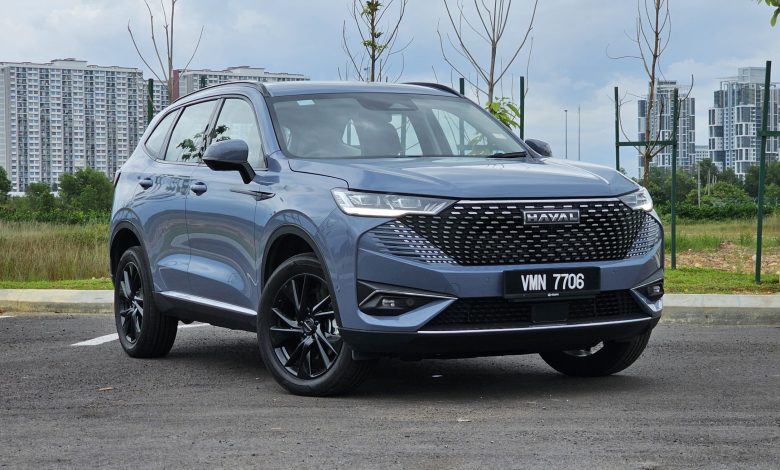
Just a little compilation of all the little things observed after a long weekend with the Haval H6 HEV.
For various convoluted logistical reasons, this writer had somehow found himself in the saddle of the Haval H6 HEV for waaaaay more time than he would have preferred. So to keep himself sane, he came up with what is likely the internet’s most detailed list of quirks and features he had found with this Chinese electrified SUV.
To those who are considering buying/already own a Haval H6 HEV especially, here therefore all the little things you just might not have noticed about this hybrid SUV!
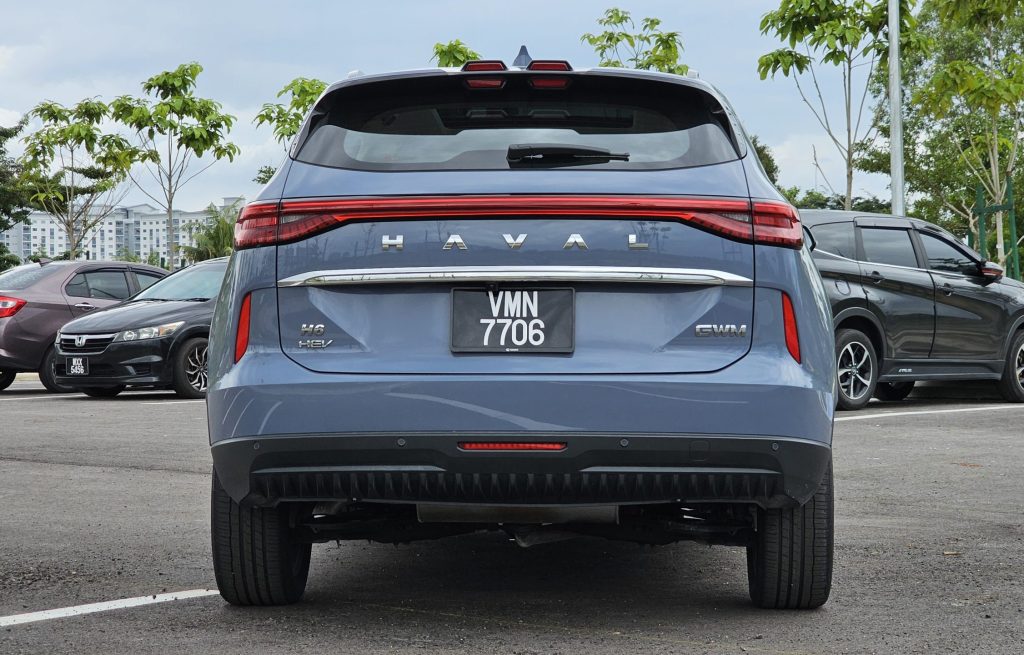
- The air vent rib is hinged on the front, meaning that the rib remains perfectly aligned with the air vent through line on the dashboard, regardless of where vertically the air vent is positioned to blow
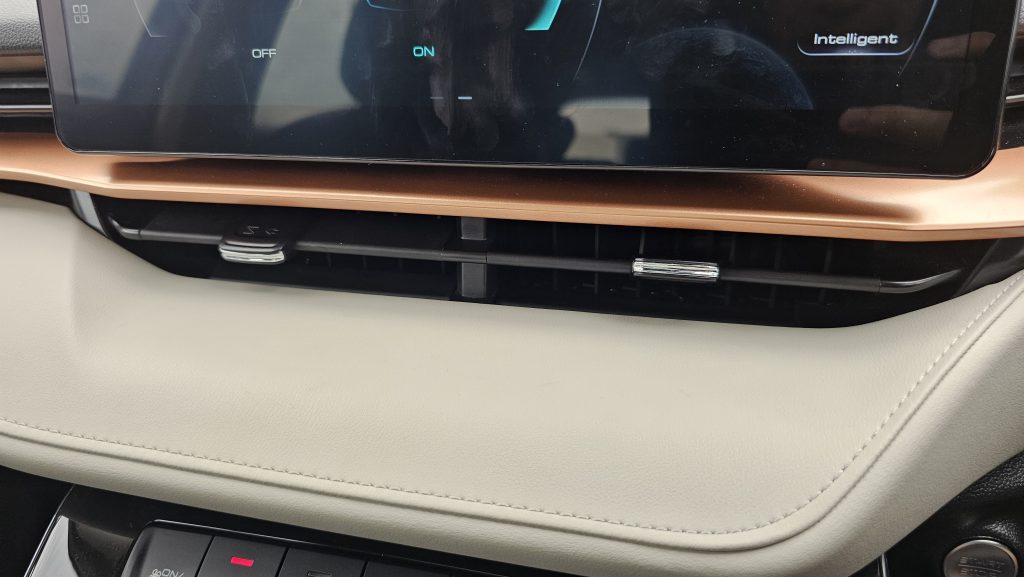
- While the left third is always the speed readout and a power percentage dial, the middle and right third of the digital driver’s display can be configured with a wide range of readouts. These include vehicle information (trip, range, TPMS, engine rpm, power flow infographic etc), navigation, current music track and notifications. The interesting thing is that both the centre and left third get the same readouts to choose from, meaning that it is possible to have them both show the same thing.
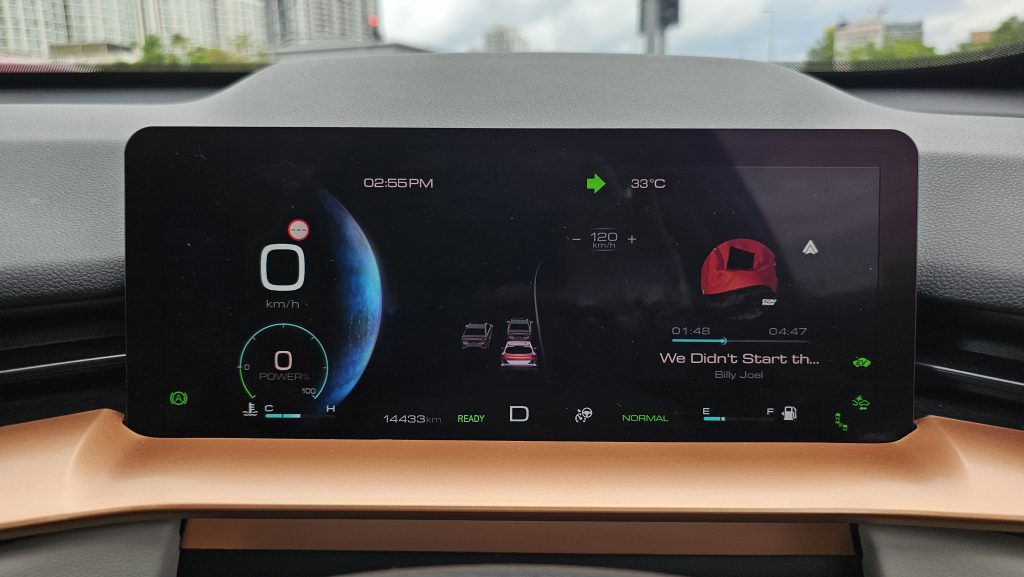
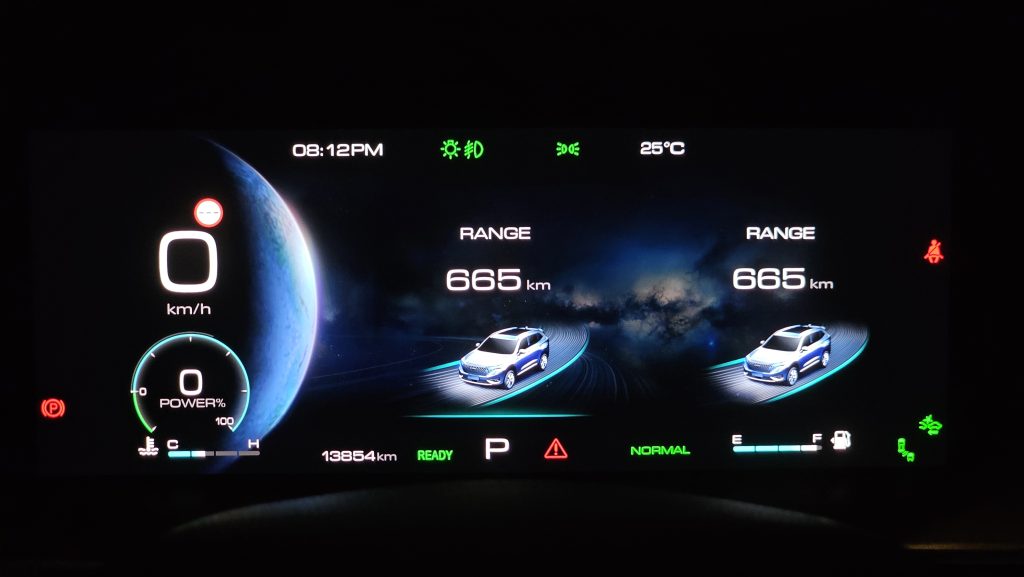
- The M button in the left side of the steering wheel is actually the change audio mode button (aka change from USB to FM radio etc.), and not the ‘M’ute button… The actual mute button is instead down to the right of the centrally positioned M button.
- The volume and change track buttons on the steering wheel still work when only the ignition is on.
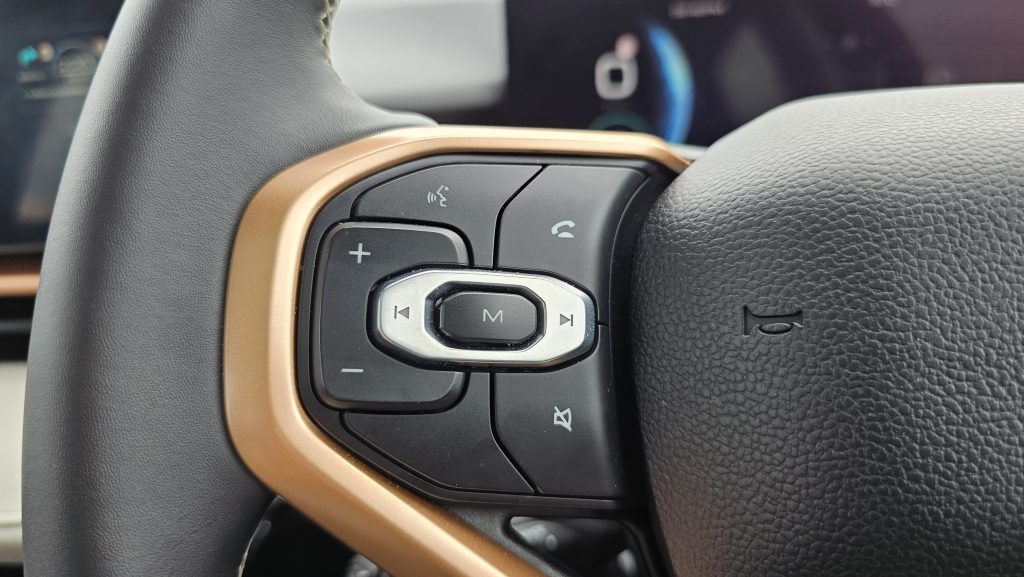
- Holding the volume button would continually increase/decrease the volume. This as common as you might think in cars actually.
- There’s no physical temperature or fan speed control in the Haval. There’s also no swipe up/down shortcut to access the climate control too…
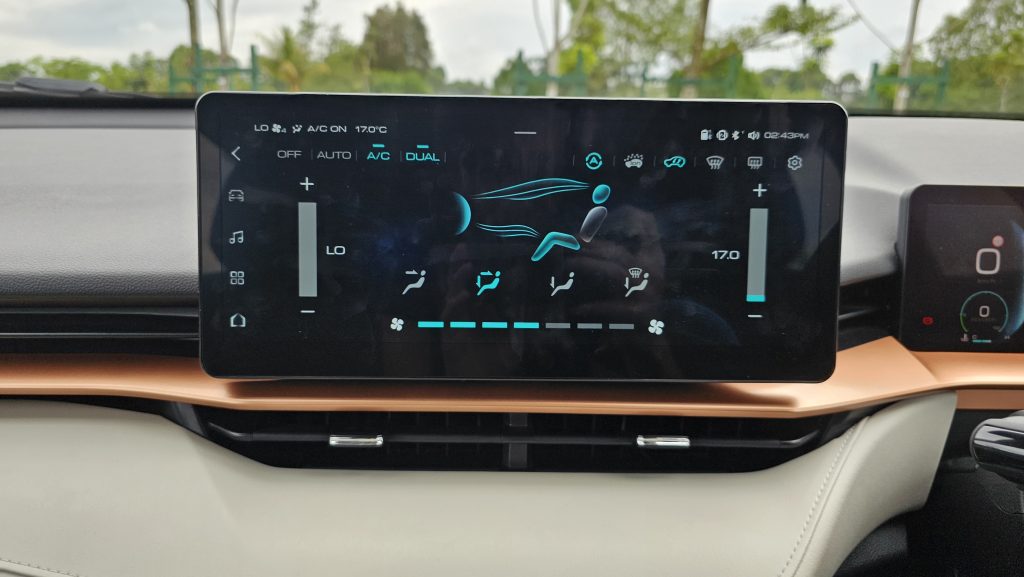
- The Haval’s heads up display shows speed, map directions integrated with Waze or Google maps on android auto/apple carplay (with the individual lane to take), as well as live traffic display of the road in front when adaptive cruise is activated. No song track name though, nor indicator icons.
- There are two (technically three) themes for the Haval’s heads up display: normal and sport. (Snow is just normal but in blue). Sport adds a white ring around the speed readout, which goes blue based on the engine rpm.
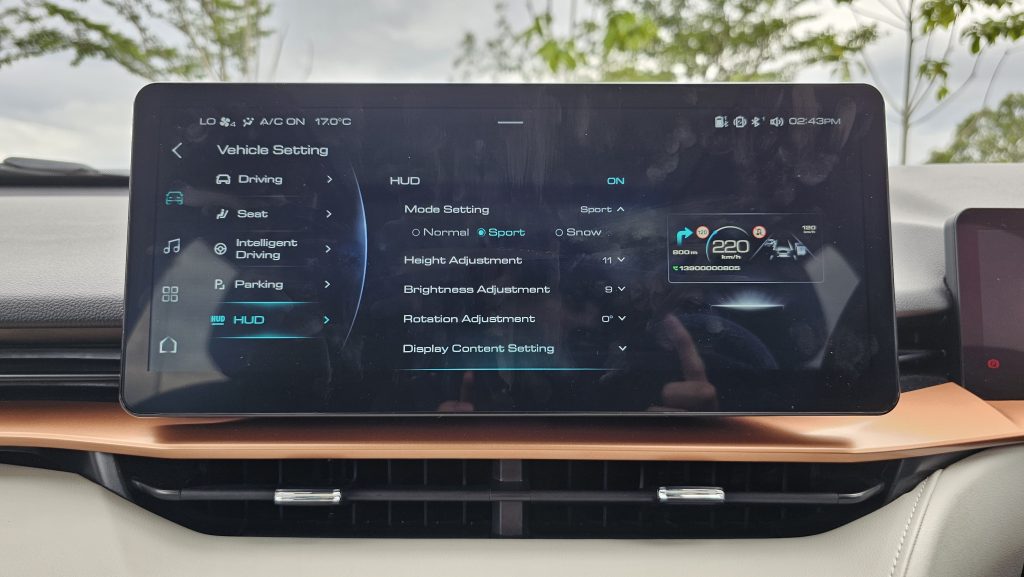
- There’s no physical button to operate the ventilated seats. What more is that their operation is not under the climate control menu in the central screen, but instead in a sub-menu under ‘vehicle settings’. That said, one could easily get to the climate seat by swiping down from the screen and selecting the (somewhat questionably named) ‘seat’ button
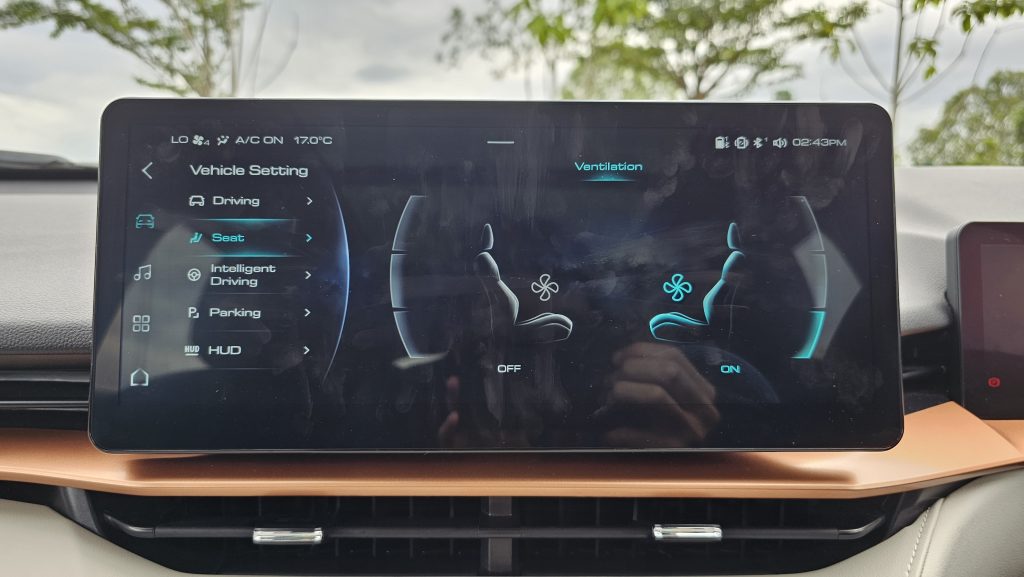
- There are selectable three steering modes: Comfort, Sport, Light. This could be accessed from the swipe-down screen from the main menu.
- There are four selectable driving modes: Normal, Sport, Snow and Eco. Curiously, they are positioned within the swipe down menu in a grid that looks like it has space for six icons, with the two missing modes perhaps for the all-wheel drive variant(?)
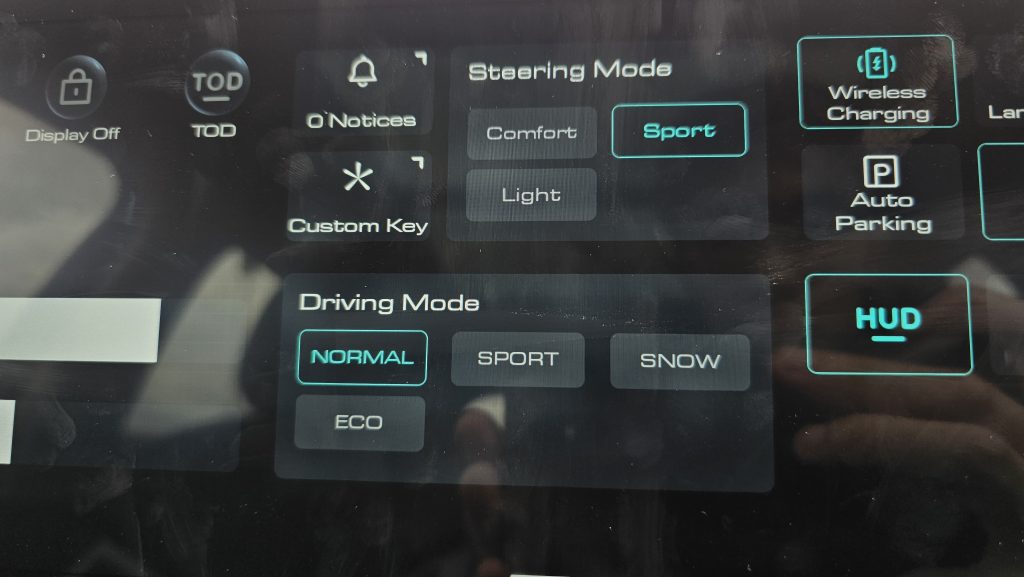
- The Haval H6 features a refreshingly old-school dedicated cruise control stalk, instead of the usual mess of buttons that is crammed onto the steering wheel like most modern cars. Here’s how it works:
- Single tug forward: adaptive cruise
- Double tug forward: adaptive cruise with lane assist
- Pull up: reset/increase speed
- Push down: set/decrease speed
- Distance on a toggle switch on the stalk
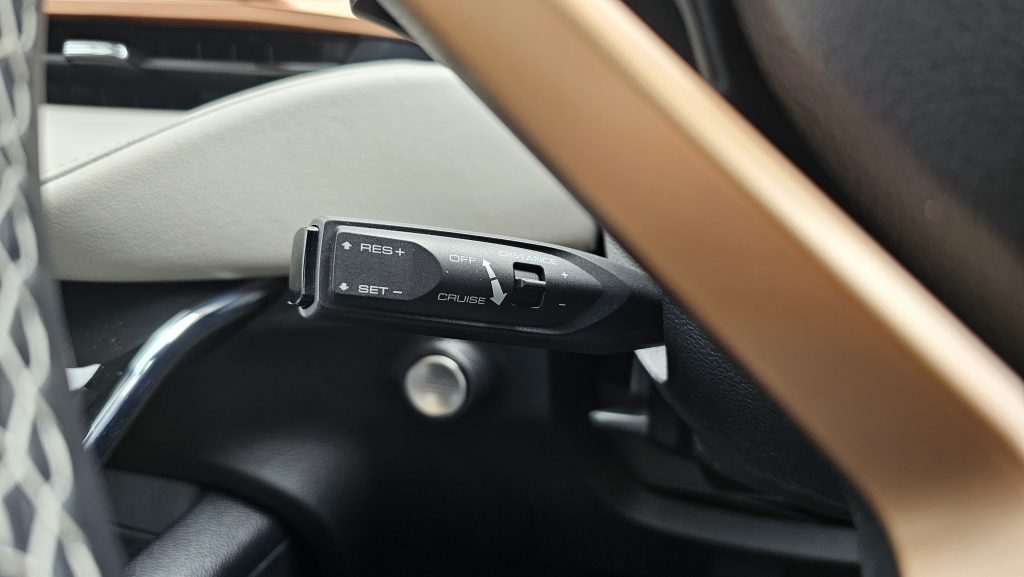
- The upper operational speed limit of the Haval’s cruise control is 150 km/h.
- The cupholder divider on the Haval’s centre console is a somewhat flimsy flip-up thing.
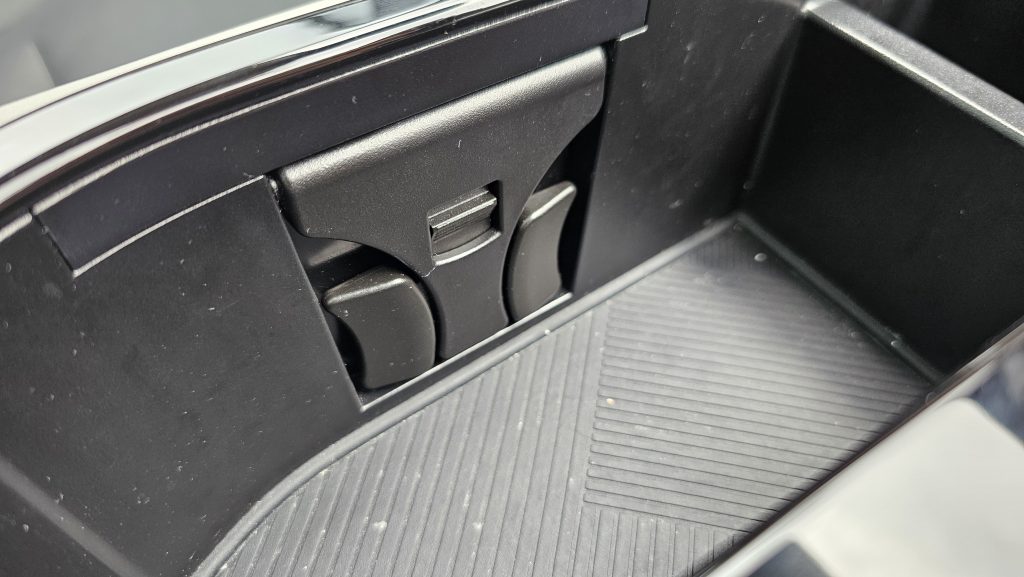
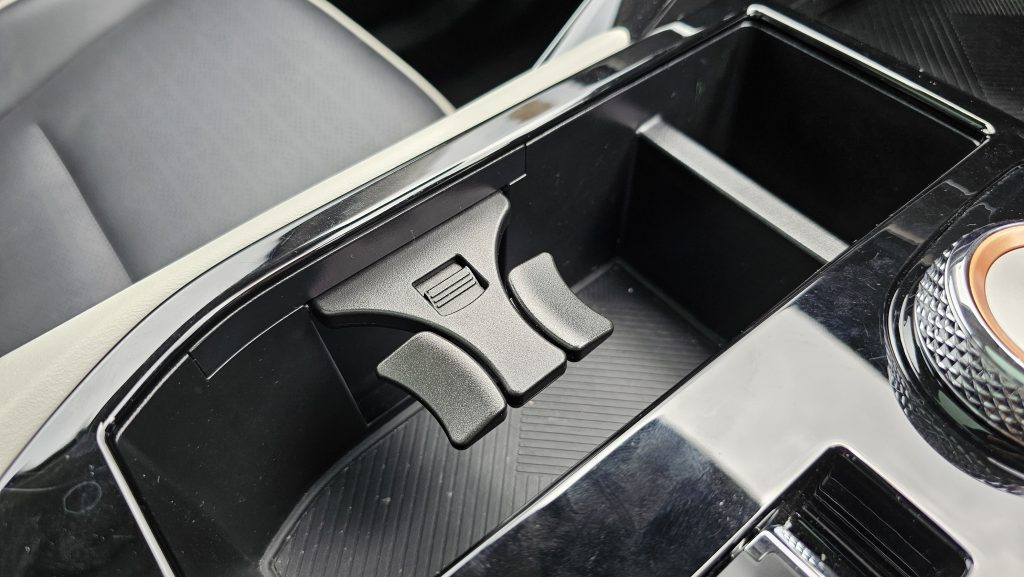
- The centre console cupholders feature a little separate compartment right above it, which is perfect for things like keys. Shame it can’t be closed though.
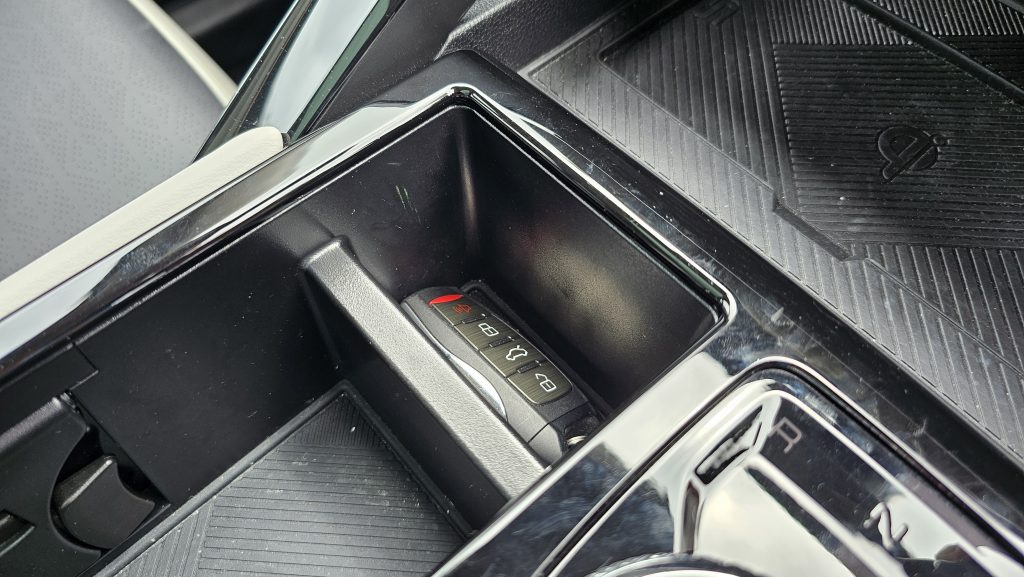
- The Haval H6 HEV has a full-length panoramic glass roof with sunshade, which unfortunately does not close automatically when the car is switched off. Compensating for that though is for it to come with a sunroof that actually opens, which is not always the case for cars with panoramic glass roofs these days.
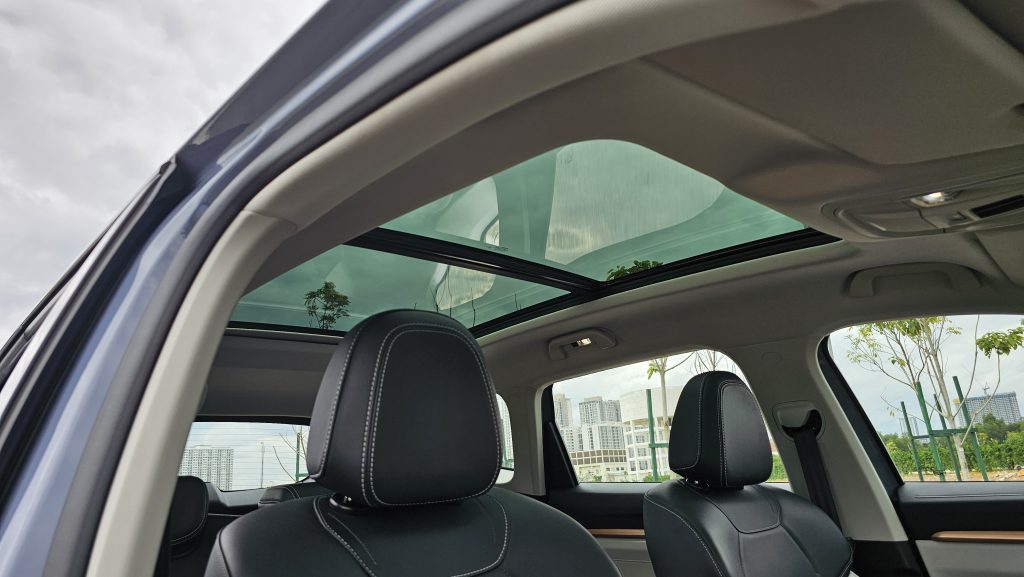
- The sunroof shade and sunroof operation switch in the Haval are essentially power window switches mounted to the roof. This means that they also do work like power windows, with just one quick prod seeing for the sunshade to open/close all the way or the sunroof to fully open/close, alá one-touch up/down windows!
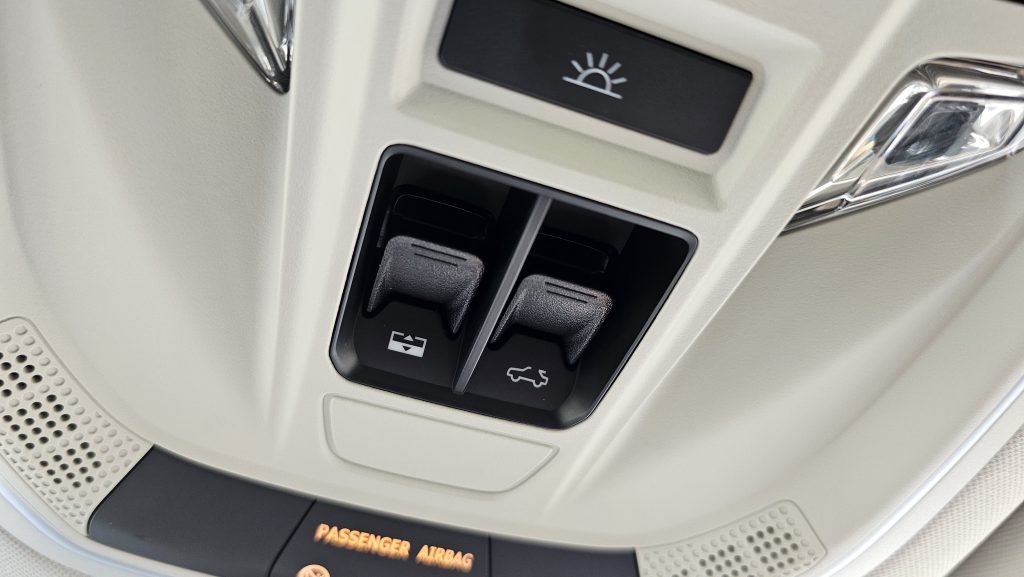
- All USB ports in the Haval’s cabin are still the old-style USB-A ports. There are 5 in total: 1 by the rear view mirror for a dash cam, two in front on either side of the central tunnel, two right below the rear air vents on back of the centre console.
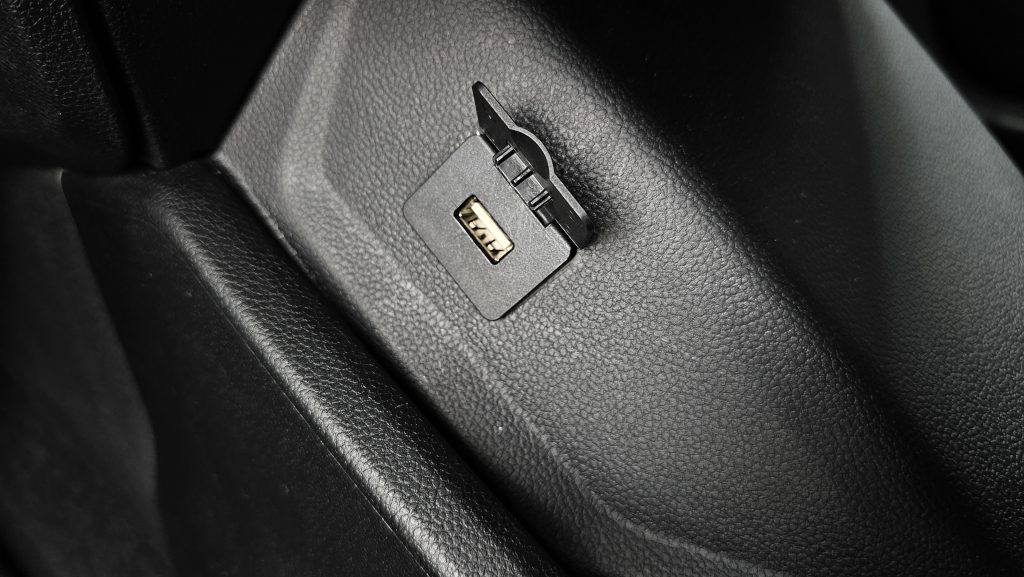
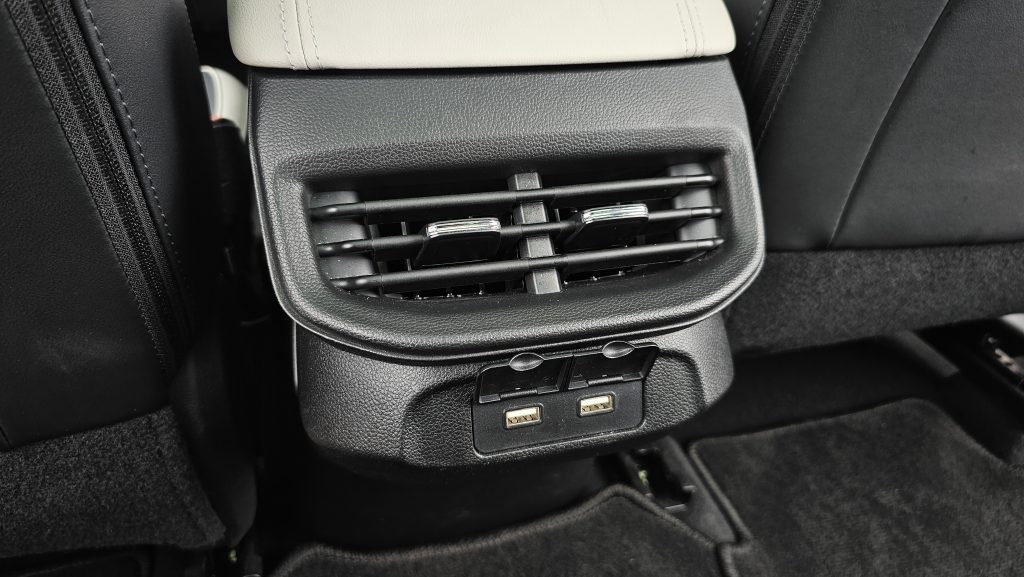
- The start stop button on the Haval is rather well hidden right where the driver’s knee is. Cynically, it almost feels like an afterthought…
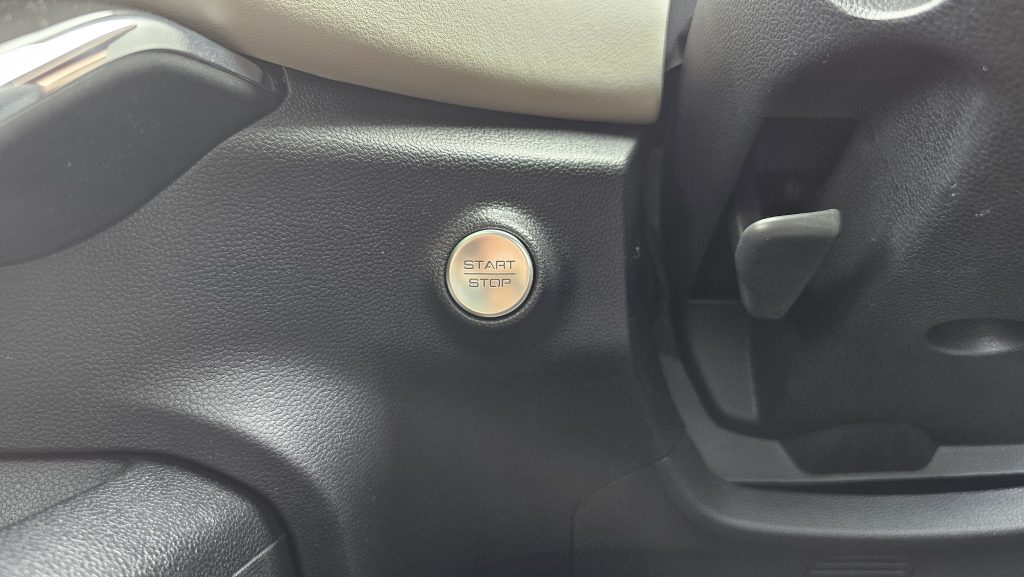
- The Haval H6 HEV has a custom ‘*’ key on the steering wheel, which could only be programmed to the following four settings:
- play favourite station
- best listening position (aka speaker focus): front row or full car
- HUD on/off
- wireless charging
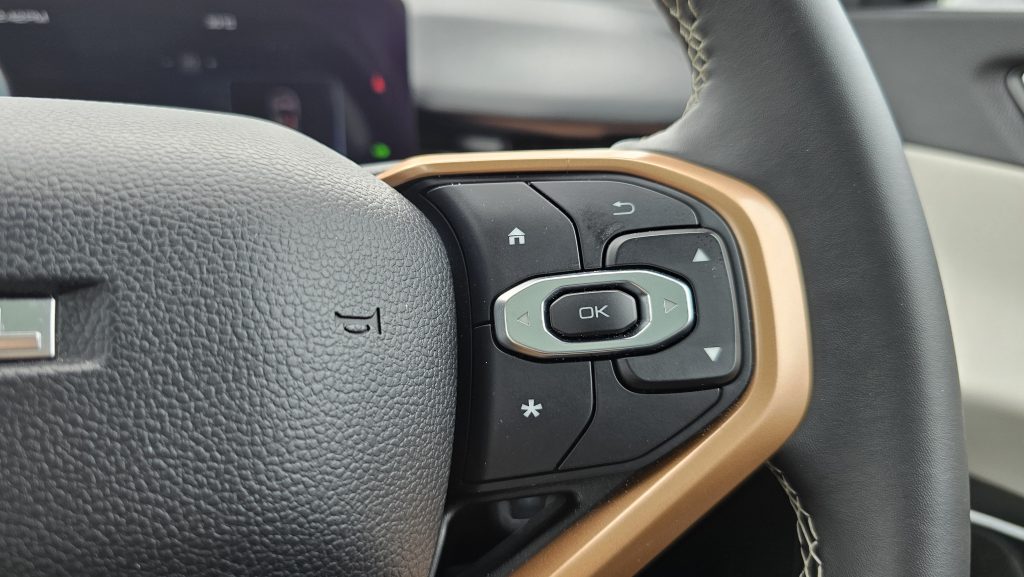
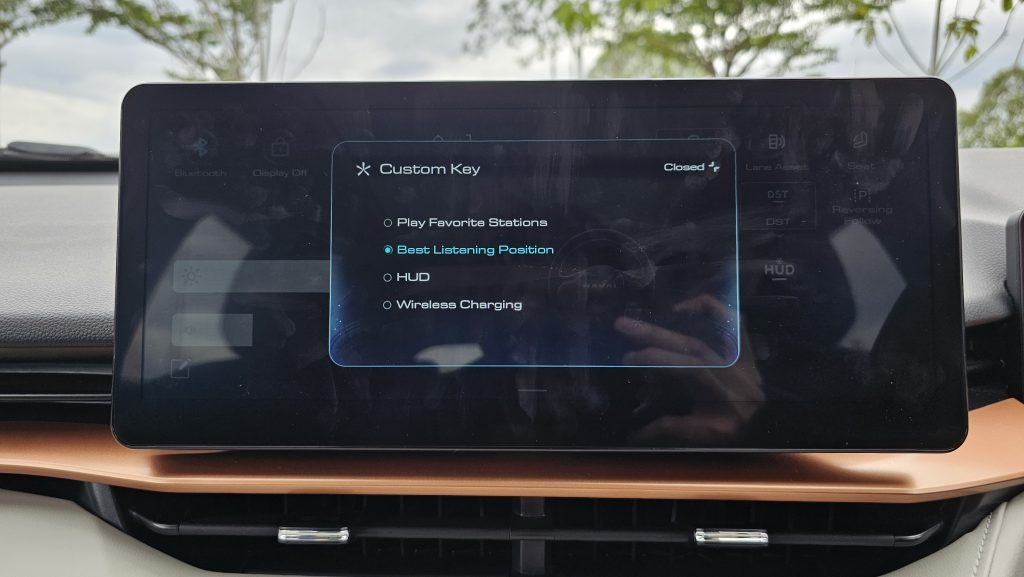
- The Haval follows Chery by coming with a slightly concave rear view mirror, which makes the view from it ever so slightly disorientating. At least it’s auto-dimming though.
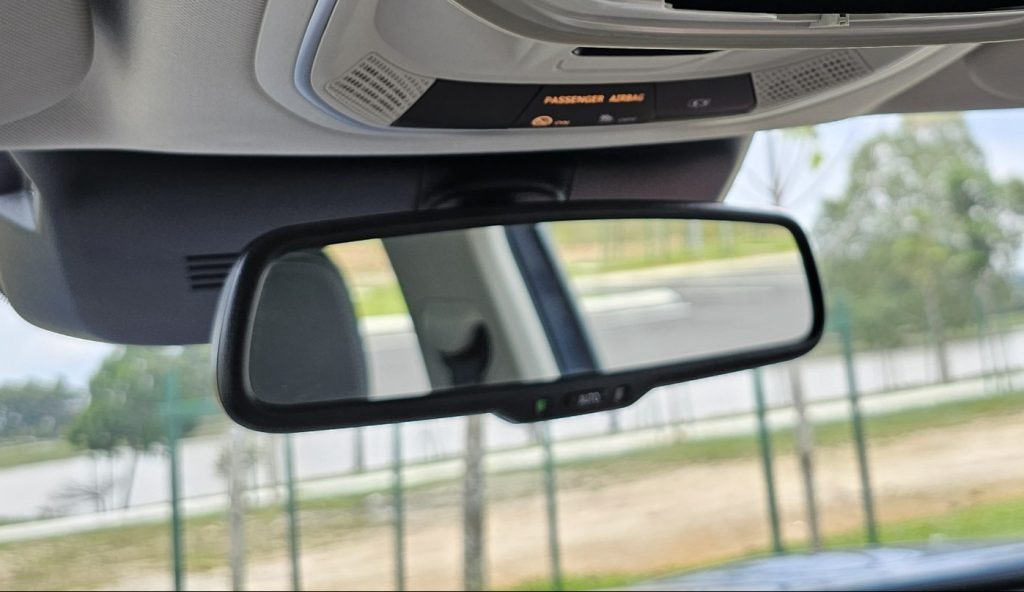
- The Haval H6 HEV follows the Continental stalk layout with the indicator stalk on the left, while wiper stalk is on the right.

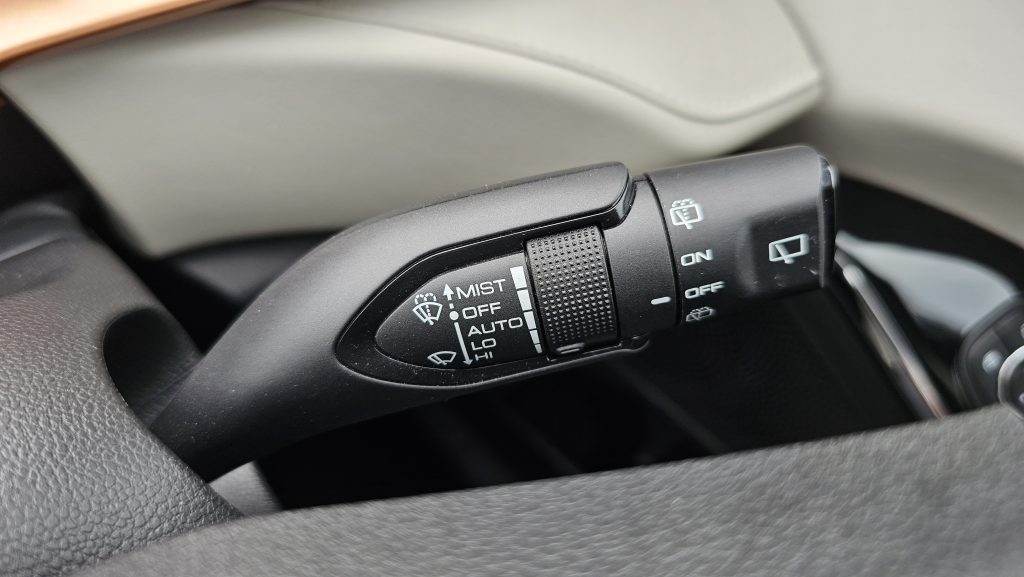
- There are no side repeaters for the indicators on the wing mirror, or on the HUD of this Haval. The only visual way to know the indicator is on is then through the tiny icon in the digital display.

- The Haval’s Android Auto integration is wired, which isn’t the worst thing in the world given that the wired connection actually charges the phone that is currently paired. What is more annoying though is that once Android Auto is activated, you don’t have access to any of the vehicle functions. The typical swipe down to access shortcuts don’t work for instance. And there is also no easy way to exit Android Auto too. Those who wish to do so have to tap on the Haval icon in the app drawer. A very bothersome sequence of steps for just wanting to change the fan speed for instance.

- The DTS audio effect equaliser on the Haval is actually decent, wit the only complaint regarding the sound quality really is for it to be a tad sunken. Worth pointing out though is that once DTS audio effect is on, you can’t further fine tune EQ settings.
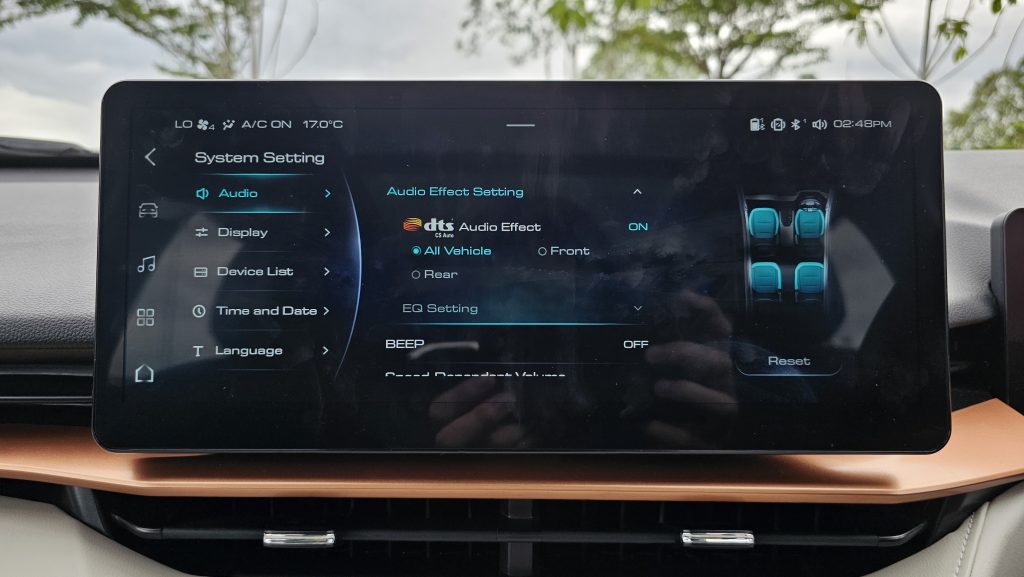
- There were two quite interesting theme settings for the screens with this test car: Space Fold (a grey-orange futuristic Fifth Element/Star Trek-type theme) and The Foreign Space (a blue theme with planets in the backdrop).
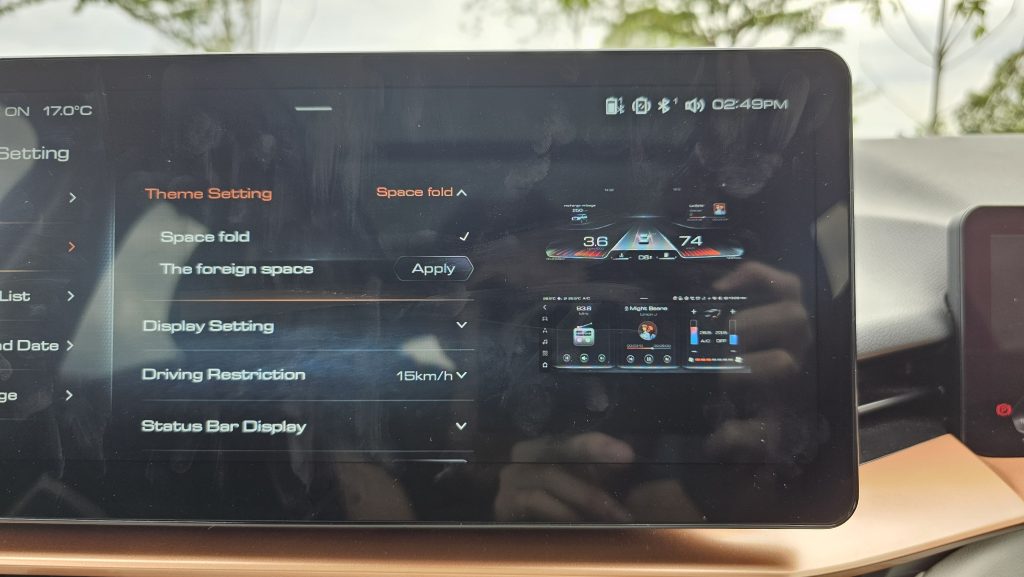
- Red is unfortunately the only colour available with the Haval’s interior ambient lighting, and the ambient lighting is also only available up front. What is cool though is for the futuristic vein pattern on its dashboard to actually be backlit from below, instead of being projected by the LED strip just above.

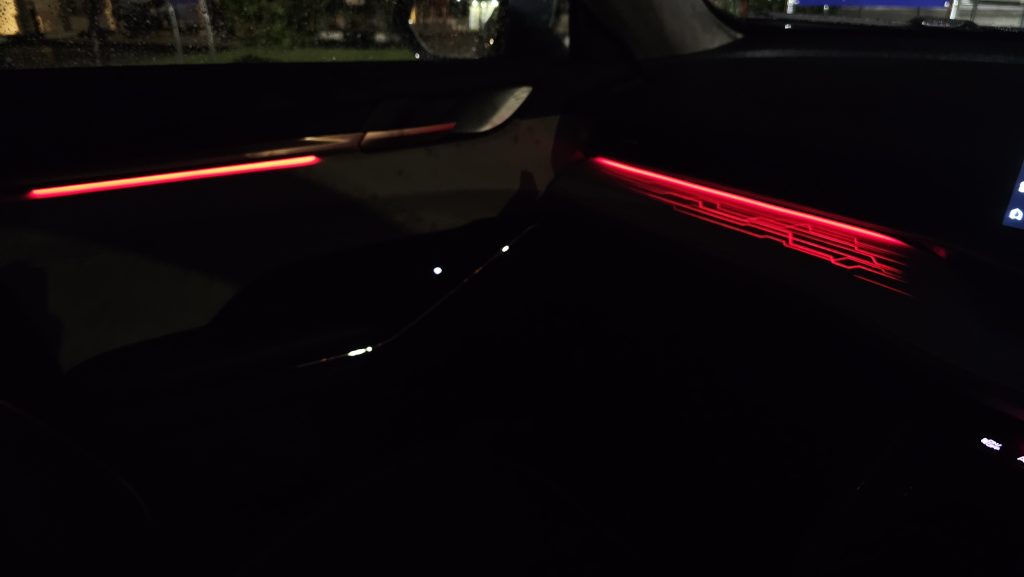
- Like nearly all Chinese cars, the Haval H6 HEV requires the driver to belt up before it actually allows any motion of the vehicle, even if it is in Drive.
- The Haval H6 has white LEDs for the interior lights, but yellow for its vanity mirrors.
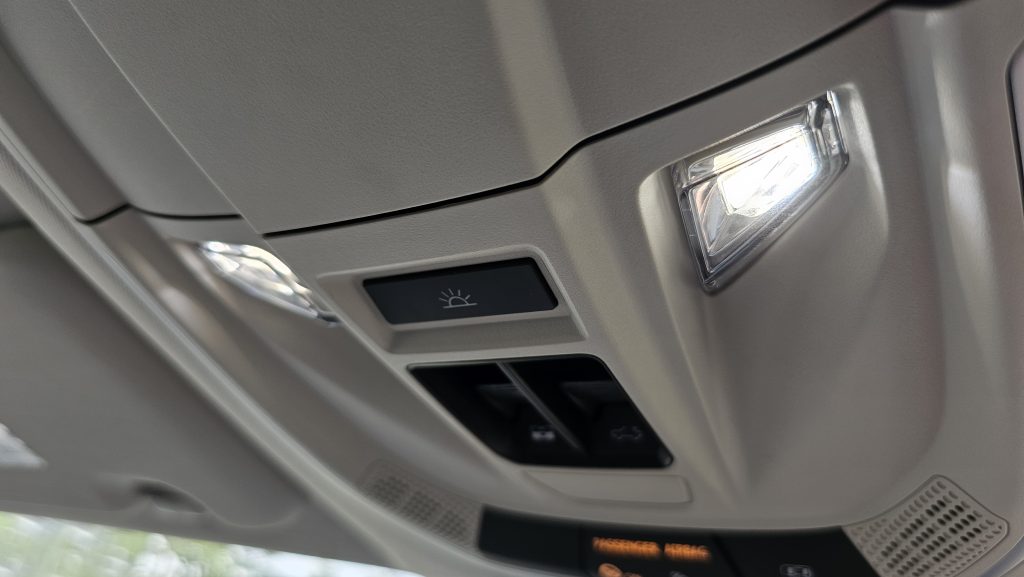
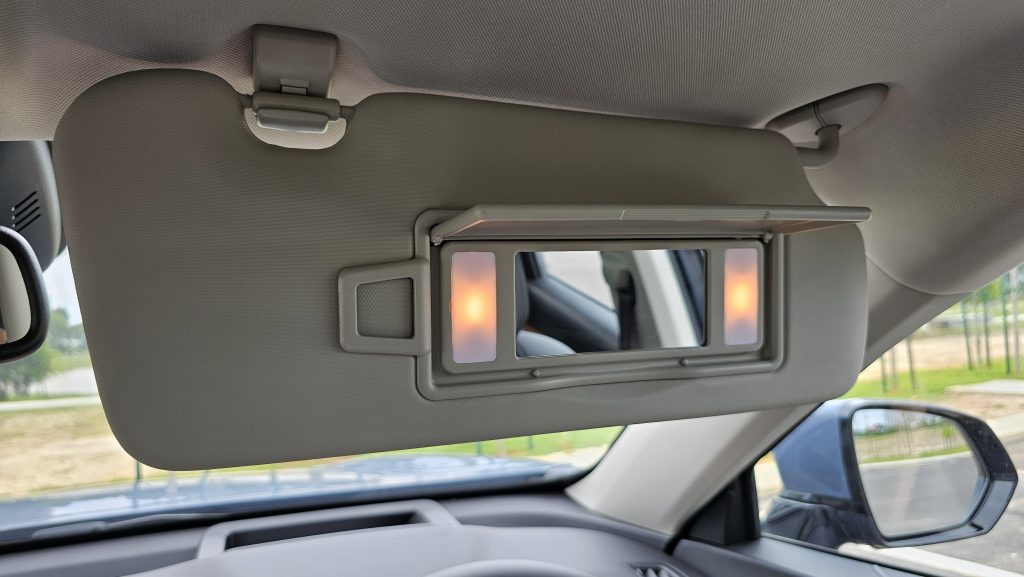
- There’s no driver’s side grab handle in the Haval, but there’s a handy grab handle on the tailgate to close the boot… which is sort of redundant as the boot operation is powered.
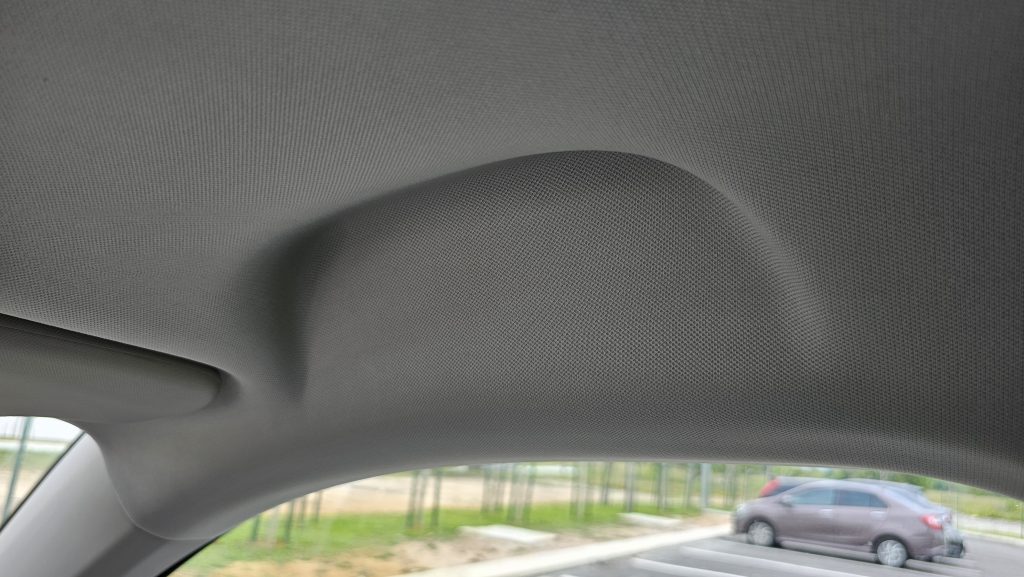
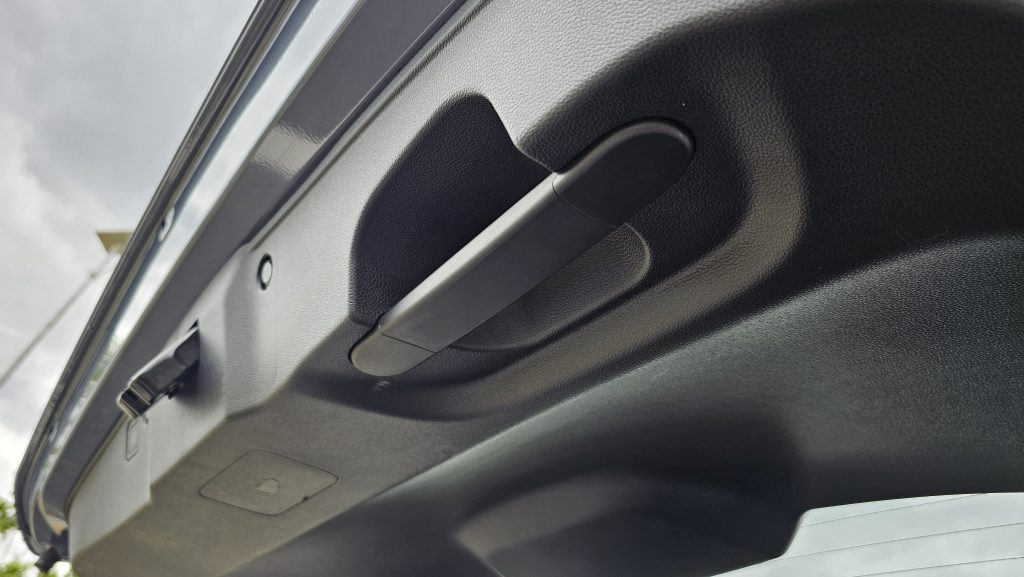
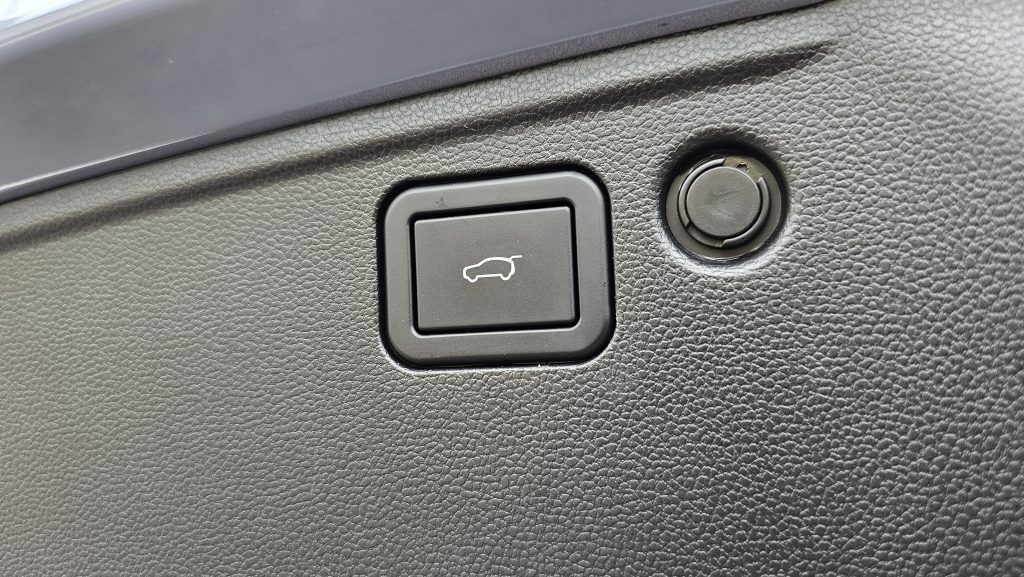
- Changing the sound volume in the Haval will prominently display the current volume right in the middle of the screen, with whatever is on the screen blurred in the background.
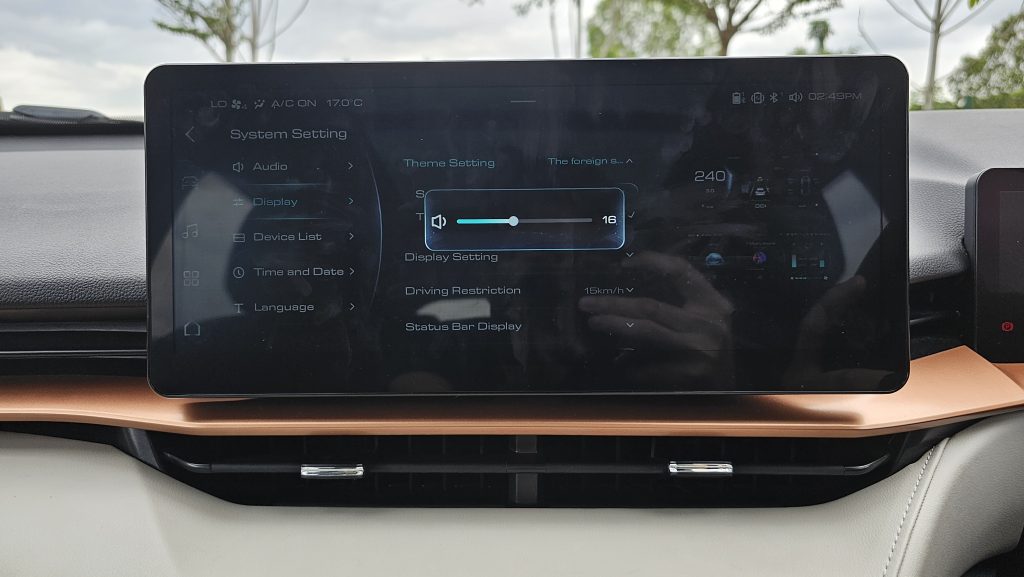
- Turning on Wading Mode will force the engine to start and run continuously, until the mode is switched off.

- Regenerative braking in the Haval on occasion physically depresses the brake pedal, with the driver feeling the pedal being slightly more numb than usual too upon initial bite when this occurs.
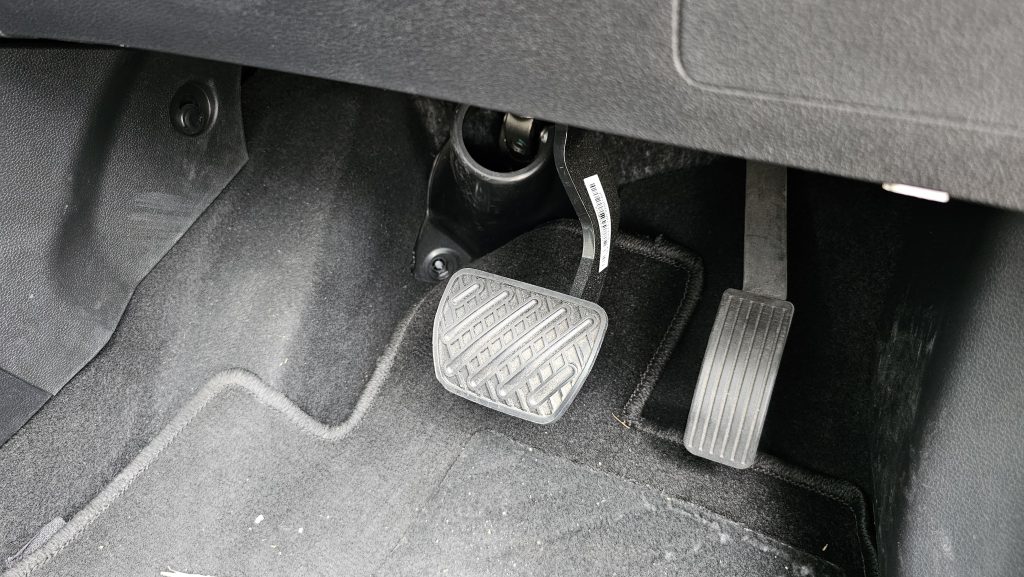
- The Haval’s infotainment can only hold a maximum 5 Bluetooth connections in its memory.
- There are no height adjustability for the front seatbelts in the Haval.
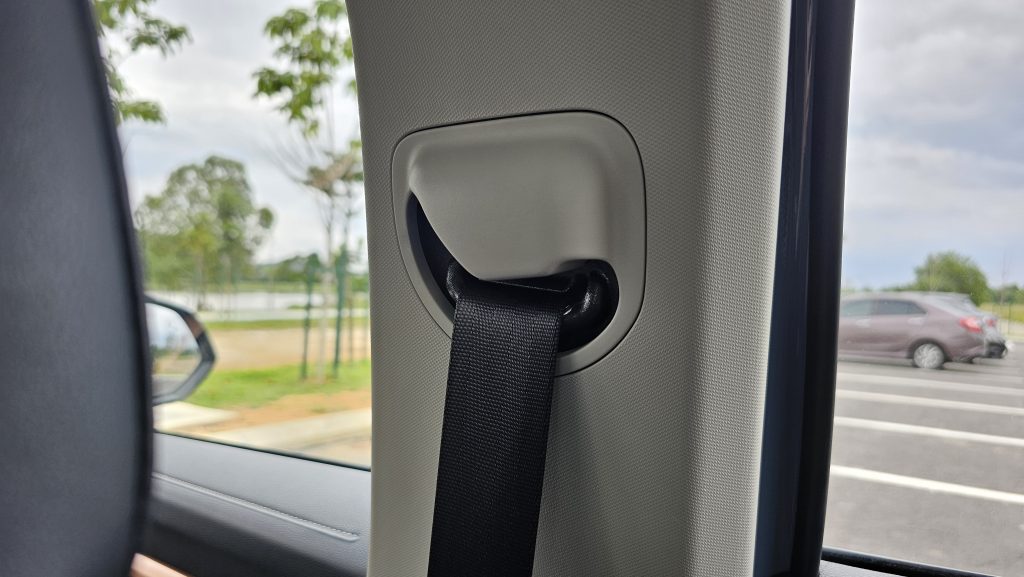
- While the headlights themselves in the Haval are auto on/off, their height adjustment are instead to be manual.
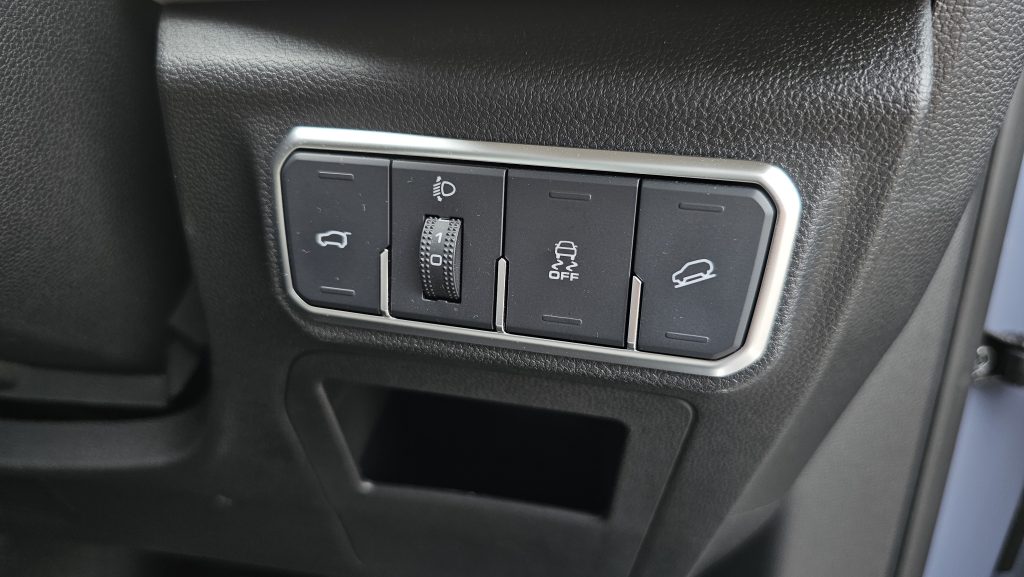
- Both the driver and front passenger external door handle features a keyless vehicle lock button. Unlocking the Haval meanwhile just requires the sticking of a hand through the door handle while the key is on the person.
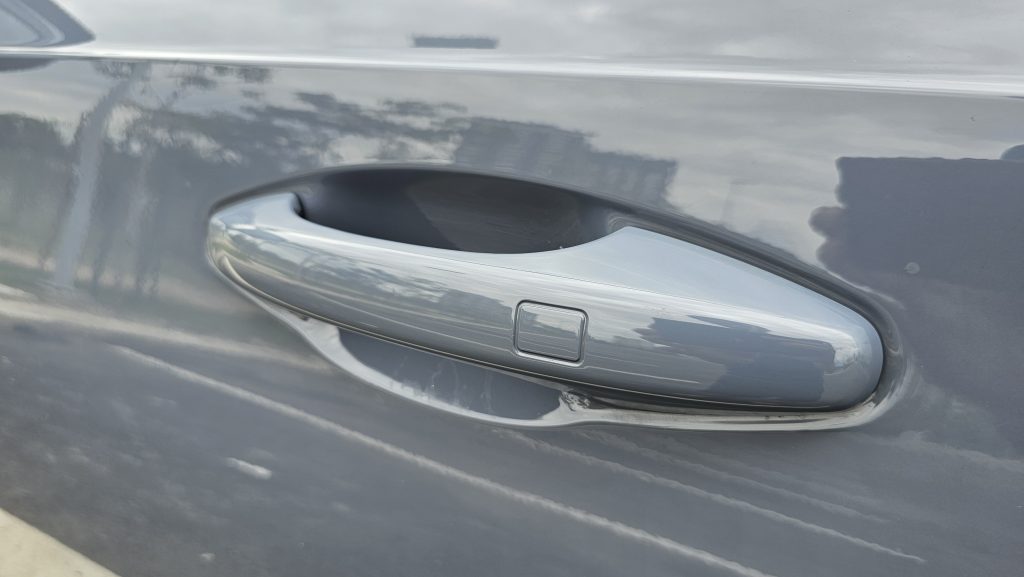
- The Haval’s key fob has a dedicated horn alarm button. Not something you see very often these days.
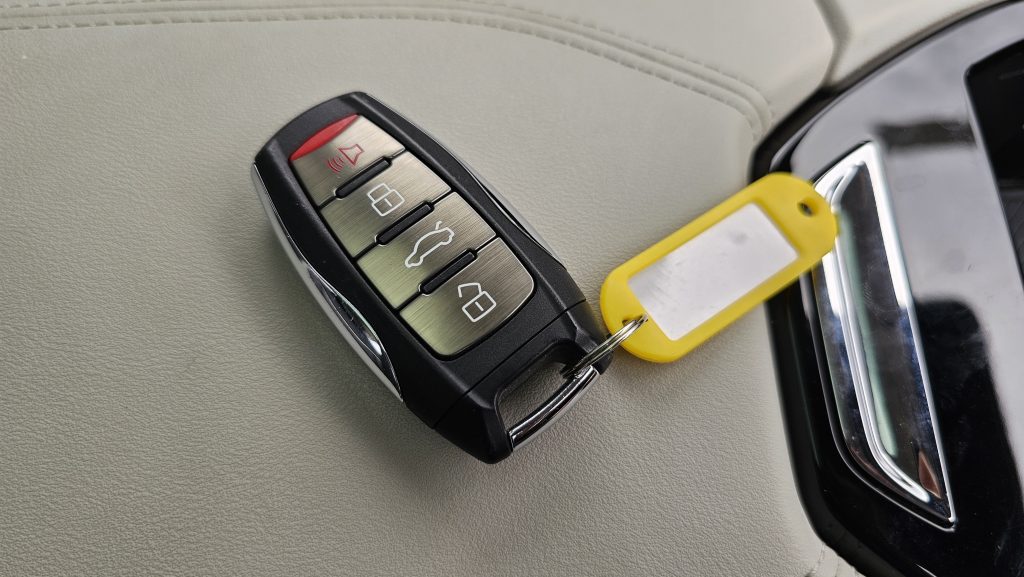
- It’s certainly nice to have an actual physical surround view camera activation button in the Haval. Credit where credit is due too, the speed at which the camera comes on after pressing the button is near instantaneous. Impressive.
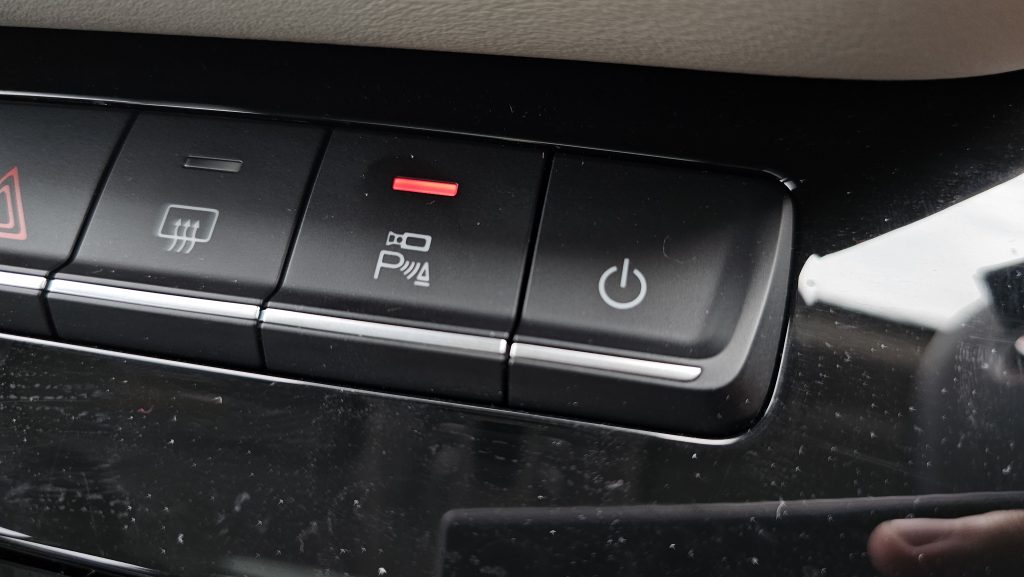
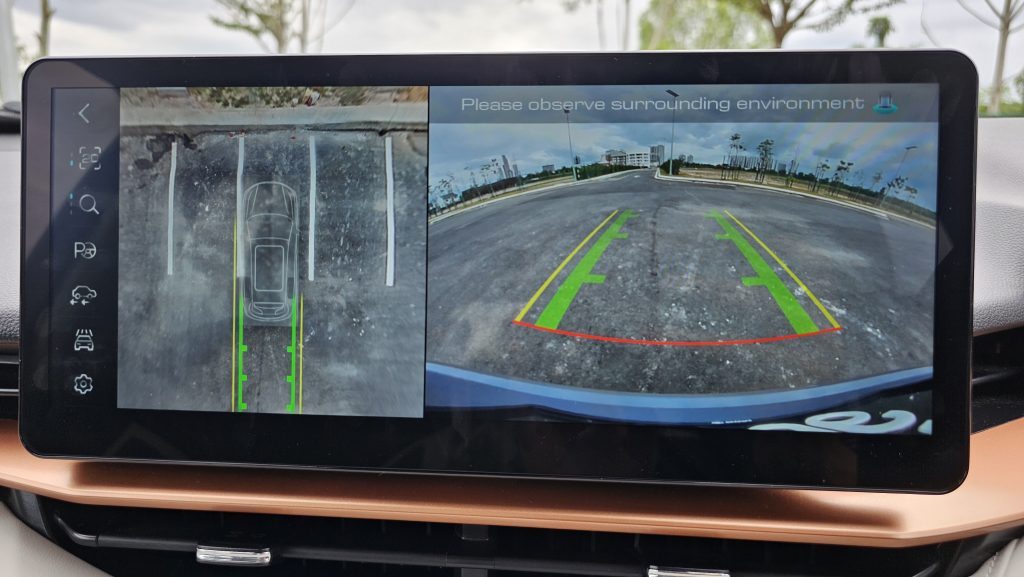
- You could change the transparency of vehicle shown in the surround view camera from between 0, 50 and 100%, with 100% allowing for almost a transparent chassis view. The feed from this test car’s rear camera though seems a bit senget, because what is shown as dead straight on the feed sees for it to be ever so slightly crooked in real life.
- The Haval has one touch up/down operation for all four windows, but its rear windows don’t fully wind down.
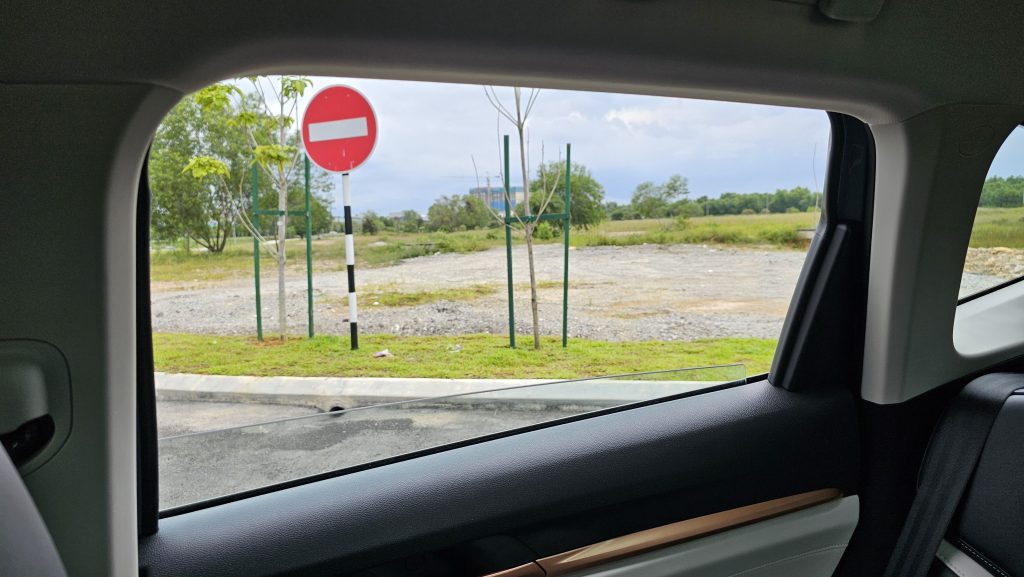
- The rear windscreen defroster heating element goes squiggly where the rear wiper typically sits, presumably to better clear any frost built up on it.
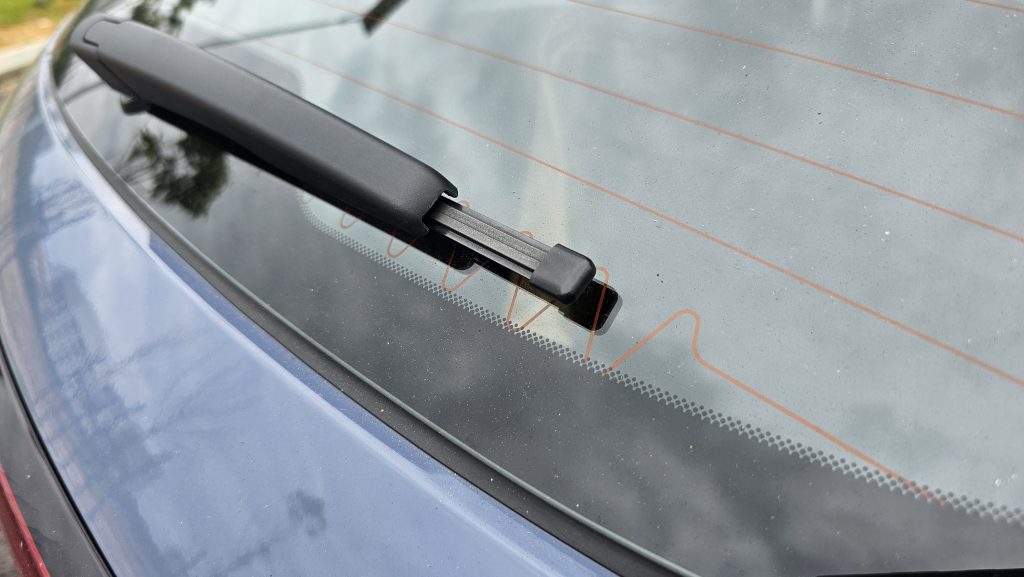
- A somewhat shallow angle for its fuel filler neck means that you can’t really rest the fuel filler in the nozzle, without the sense that it’ll just pop out anytime. So the Haval is one of those cars where you are best to hold onto the pump while refuelling.
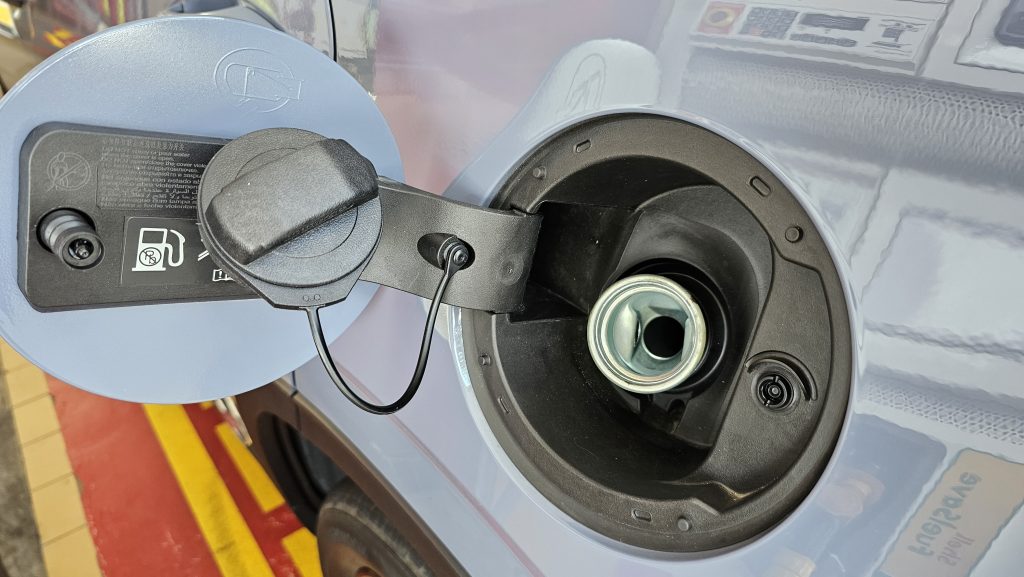
- The Haval H6 HEV’s centre console storage cubby is deep enough for your standard medium-sized Chinese New Year snack container. Sadly it isn’t a chilled compartment though…
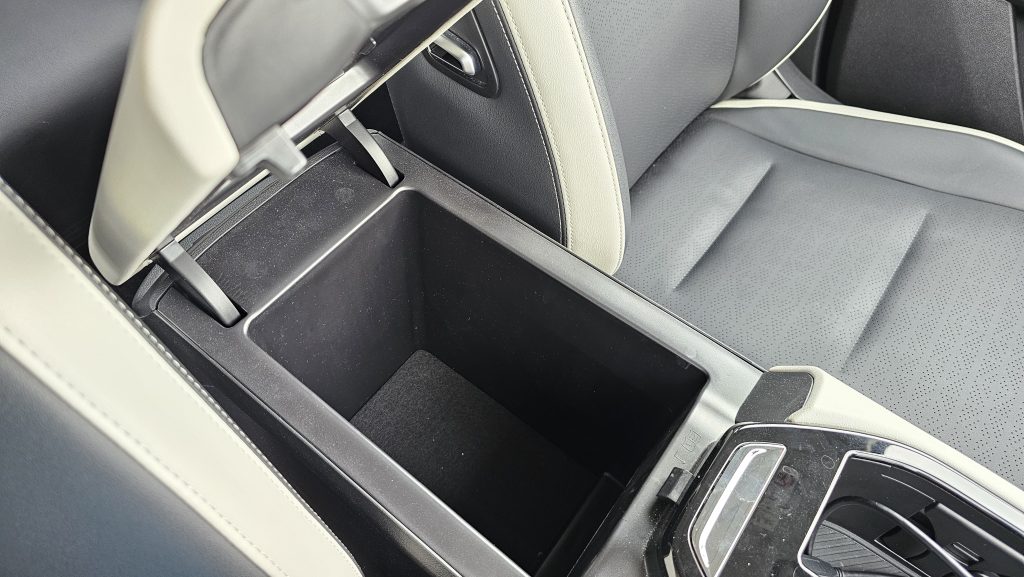
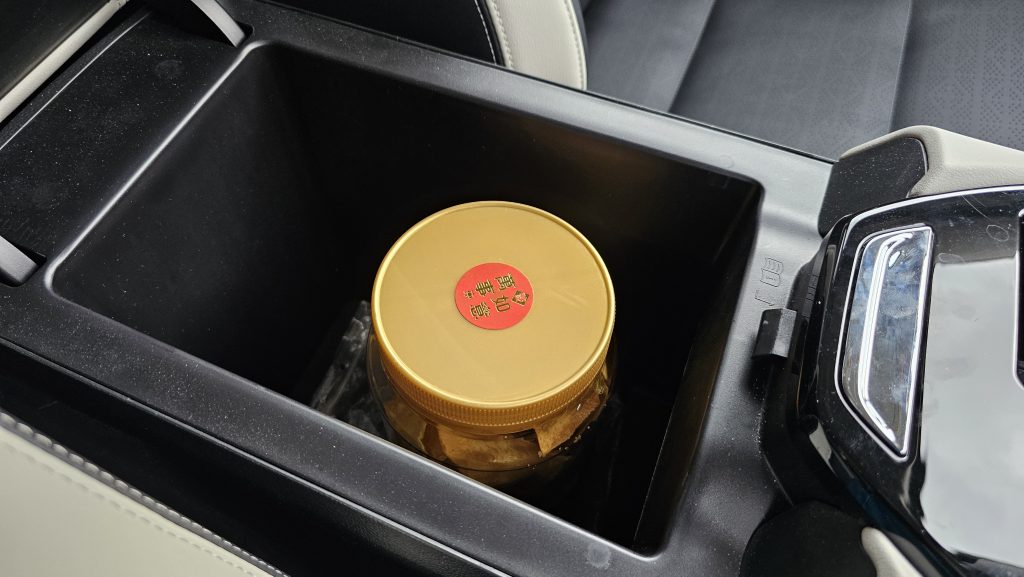
- The Haval’s radio still plays static when it can’t get radio reception (aka underground). Most newer cars now tend to filter it out to silence.
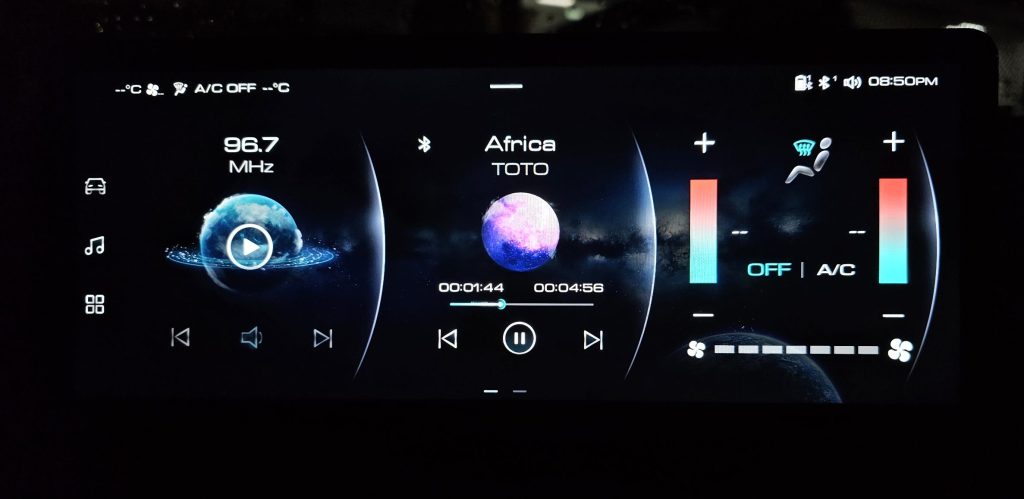
- Like most cars, the Haval has 2 trip readouts. Trip A seemingly resets automatically every day, while Trip B seems to hold memory until its manually reset.

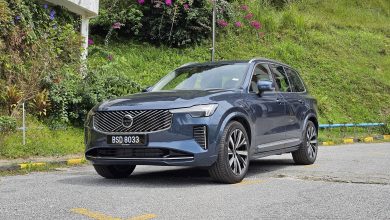
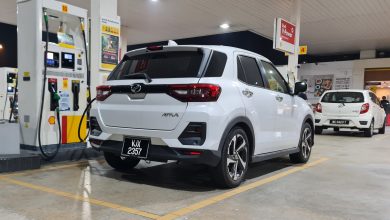
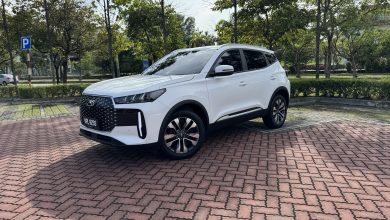
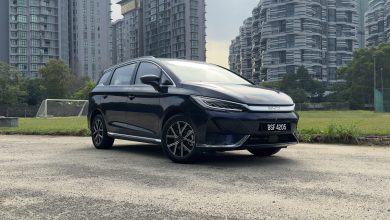
How to turn off the radio instead of muting it?